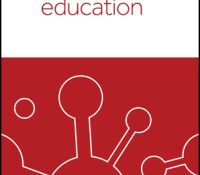Eric.ed.gov – Red Light, Purple Light! Results of an Intervention to Promote School Readiness for Children from Low-Income Backgrounds
eric.ed.gov har udgivet: Considerable research has examined interventions that facilitate school readiness skills in young children. One intervention, „Red Light, Purple Light Circle Time Games‟ (RLPL; Tominey and McClelland, 2011; Schmitt et al., 2015), includes music and movement games that aim to foster self-regulation skills. The present study (N = 157) focused on children from families with low-income and compared the RLPL intervention (SR) to a revised version of RLPL that included literacy and math content (SR+) and a Business-As-Usual (BAU) control group. In both versions of the intervention, teachers were trained to administer the self-regulation intervention in preschool classrooms with coaching support. Although not statistically significant, children receiving either version of the intervention gained more in self-regulation on the Head-Toes-Knees-Shoulders (HTKS) over the preschool year compared to the BAU… Continue Reading
